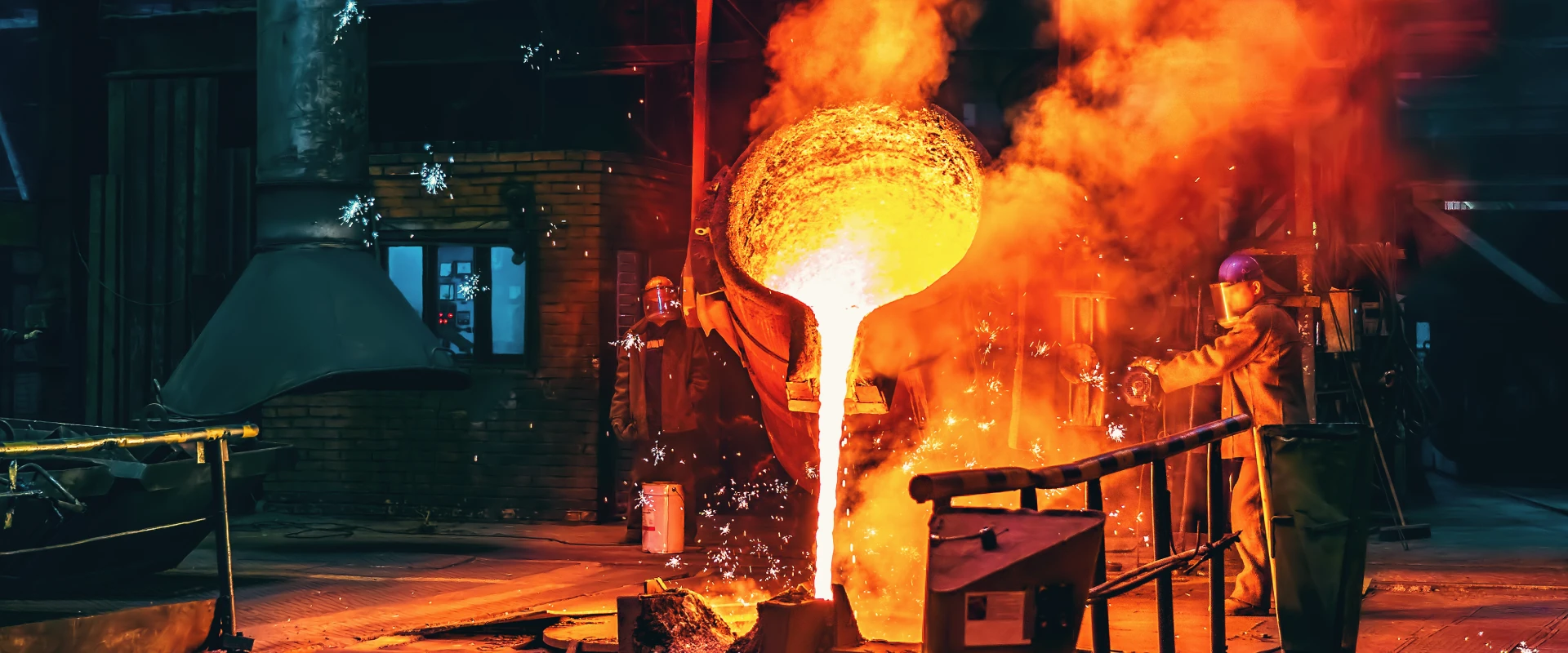Stainless Steel Waste Incinerator Liners: Corrosion Protection and Replacement Cycle Evaluation of 310S and HK40 in HCl-Containing Flue Gas
Waste incineration is a critical waste-to-energy technology, but its内衬 (liners) face severe corrosion threats from HCl-rich flue gas— a byproduct of plastic and organic waste combustion. These liners act as the first defense against high temperatures (800-1100°C) and corrosive media, and their failure can lead to equipment leaks, production downtime, and environmental hazards. 310S austenitic stainless steel and HK40 heat-resistant alloy are two mainstream choices for incinerator liners. This article compares their corrosion resistance in HCl-containing environments, analyzes targeted protection measures, and provides a data-driven replacement cycle evaluation to guide practical applications.
Why HCl Flue Gas Is a Lethal Threat to Incinerator Liners
HCl in waste incinerator flue gas (typically 500-2000 ppm) is highly reactive, especially under high temperatures and oxidizing conditions. Its corrosion mechanism targets stainless steel liners in two key ways:
Active Dissolution: HCl breaks down the protective Cr₂O₃ oxide film on stainless steel surfaces, exposing the base metal to continuous erosion. At 800°C+, this process accelerates 3-5 times compared to ambient temperatures.
Chloride Stress Corrosion Cracking (CSCC): Chloride ions penetrate microcracks in the liner, causing brittle cracking under thermal stress— a common cause of sudden liner failure in incinerators.
The corrosion rate directly determines liner lifespan; thus, selecting the right material and implementing protection measures are critical for incinerator operational stability.
310S vs. HK40: Corrosion Resistance in HCl-Containing Flue Gas
310S (25% Cr, 20% Ni) and HK40 (25% Cr, 20% Ni, 1.5% Si) share similar high-chromium-nickel foundations, but their microstructures and alloying elements create distinct corrosion performance gaps. A 12-month field test in a municipal waste incinerator (HCl concentration: 1200 ppm, operating temperature: 950°C) revealed clear differences:
1. 310S Stainless Steel: Cost-Effective for Moderate Corrosion Environments
310S relies on its dense Cr₂O₃ film for corrosion resistance, performing well in low-to-moderate HCl concentrations:
Corrosion Rate: 0.35 mm/year in the test environment— sufficient for incinerators processing household waste with low plastic content.
Strength Retention: Maintains 85% of its room-temperature tensile strength (520 MPa) at 950°C, ensuring structural stability.
Limitations: When HCl concentration exceeds 1500 ppm, the Cr₂O₃ film degrades rapidly, increasing corrosion rate to 0.8 mm/year. It also lacks resistance to CSCC under cyclic temperature changes.
2. HK40 Alloy: High-Performance for Severe Corrosion Conditions
HK40’s silicon addition (1.5%) enhances oxide film adhesion, making it suitable for high-HCl, high-temperature incinerators:
Corrosion Rate: 0.12 mm/year in the same test environment— 65% lower than 310S, thanks to the Si-modified oxide film (Cr₂O₃ + SiO₂) that resists HCl erosion.
Thermal Stability: Its austenitic structure with fine carbide precipitates withstands 1100°C without phase transformation, ideal for industrial waste incinerators.
Trade-Off: 30% higher material cost than 310S, but lower total lifecycle cost due to longer service life.
Targeted Corrosion Protection Measures for Incinerator Liners
Even high-performance materials require auxiliary protection to extend lifespan. Combining material selection with the following measures can reduce corrosion rates by 40-50%:
1. Pre-Combustion HCl Reduction
Minimizing HCl generation at the source is the most effective preventive measure:
Waste Sorting: Remove PVC and chlorinated plastics (accounting for 10-15% of municipal waste) to reduce HCl emissions by 30-40%.
Additive Injection: Inject limestone (CaCO₃) into the incinerator furnace— it reacts with HCl to form stable CaCl₂, reducing flue gas HCl concentration to below 500 ppm.
2. Liner Surface Modification
Enhancing the protective film on 310S and HK40 liners through surface treatment:
Thermal Spraying: Apply a 200-300 μm Al₂O₃-TiO₂ ceramic coating to the liner surface. This acts as a physical barrier, isolating HCl from the base metal.
Passivation Treatment: For 310S liners, conduct high-temperature passivation (1050°C for 2 hours) to thicken the Cr₂O₃ film, improving its compactness.
3. Operational Parameter Optimization
Adjusting incinerator operation to reduce corrosion stress:
Temperature Control: Maintain furnace temperature at 900-950°C— below 900°C, HCl condensation increases corrosion; above 1000°C, the oxide film becomes brittle and peels off.
Flue Gas Scrubbing: Install a wet scrubber with alkaline absorbent (NaOH solution) to remove 95% of residual HCl before flue gas contacts the upper liner sections.
Replacement Cycle Evaluation: Data-Driven Lifespan Prediction
Liner replacement cycle depends on corrosion rate, material thickness, and safety margin (typically 0.5 mm residual thickness). Using field test data and finite element simulation, the following replacement cycles are recommended for different scenarios:
Material | Incinerator Type (HCl Concentration) | Initial Thickness (mm) | Corrosion Rate (mm/year) | Recommended Replacement Cycle (Years) |
|---|---|---|---|---|
310S | Municipal Waste (800 ppm) | 12 | 0.30 | 32-35 |
310S | Mixed Waste (1500 ppm) | 12 | 0.75 | 14-16 |
HK40 | Municipal Waste (800 ppm) | 12 | 0.10 | 65-70 |
HK40 | Industrial Waste (2000 ppm) | 12 | 0.22 | 29-32 |
310S + Ceramic Coating | Mixed Waste (1500 ppm) | 12 | 0.18 | 36-40 |
Key Monitoring Indicators for Replacement Timing
Avoid premature or delayed replacement by monitoring these parameters:
Ultrasonic Thickness Measurement: Test liner thickness every 6 months, focusing on high-corrosion areas (furnace throat, flue gas outlet).
Corrosion Product Analysis: Collect surface rust and analyze its composition— high Cl⁻ content indicates accelerated HCl corrosion.
Leak Detection: Use infrared thermal imaging to check for liner cracks or leaks, which signal immediate replacement needs.
Real-World Application: Liner Material Selection in a Waste-to-Energy Plant
A 500-ton/day waste-to-energy plant in Guangdong, China, replaced its original 304 stainless steel liners (failed after 8 years) with a hybrid solution: 310S for the lower furnace (low HCl) and HK40 for the upper flue (high HCl). After 5 years of operation:
310S liners showed a corrosion rate of 0.28 mm/year, remaining within safe thickness range.
HK40 liners in the flue section had a corrosion rate of 0.11 mm/year, with no signs of CSCC.
Maintenance costs decreased by 45% compared to the previous 304 liners, and unplanned downtime dropped from 12 days/year to 3 days/year.
Conclusion: Matching Material to Corrosion Environment for Optimal Performance
310S and HK40 stainless steel/alloy liners both offer reliable corrosion protection in HCl-containing waste incinerator flue gas, but their suitability varies by application: 310S is cost-effective for municipal waste incinerators with moderate HCl levels, while HK40 is the superior choice for industrial waste incinerators with high HCl concentrations and temperatures. Combining material selection with pre-combustion HCl reduction, surface modification, and operational optimization can significantly extend liner lifespan. By following data-driven replacement cycles and monitoring key corrosion indicators, incinerator operators can balance safety, efficiency, and cost— ensuring the sustainable operation of waste-to-energy systems.

